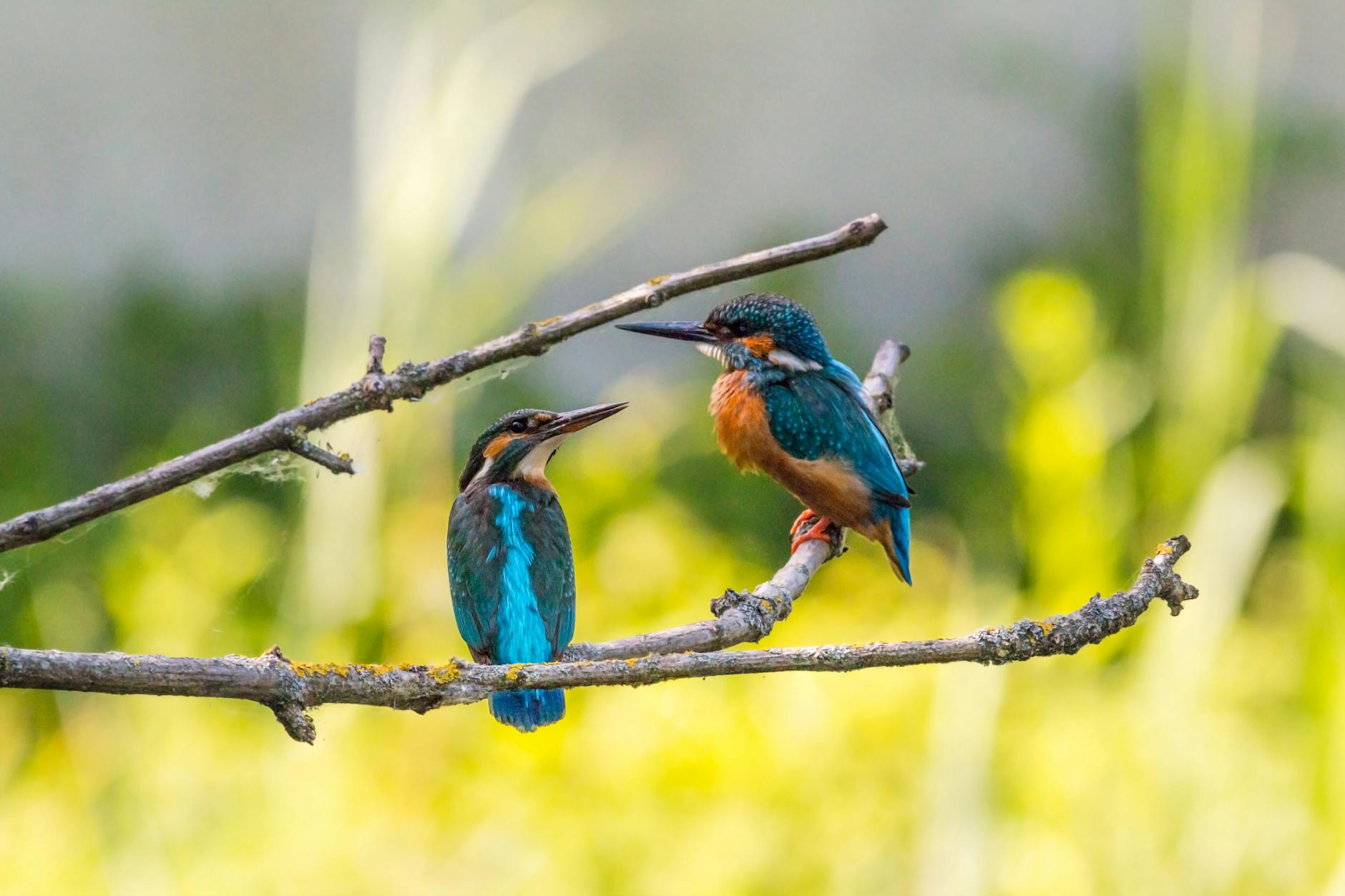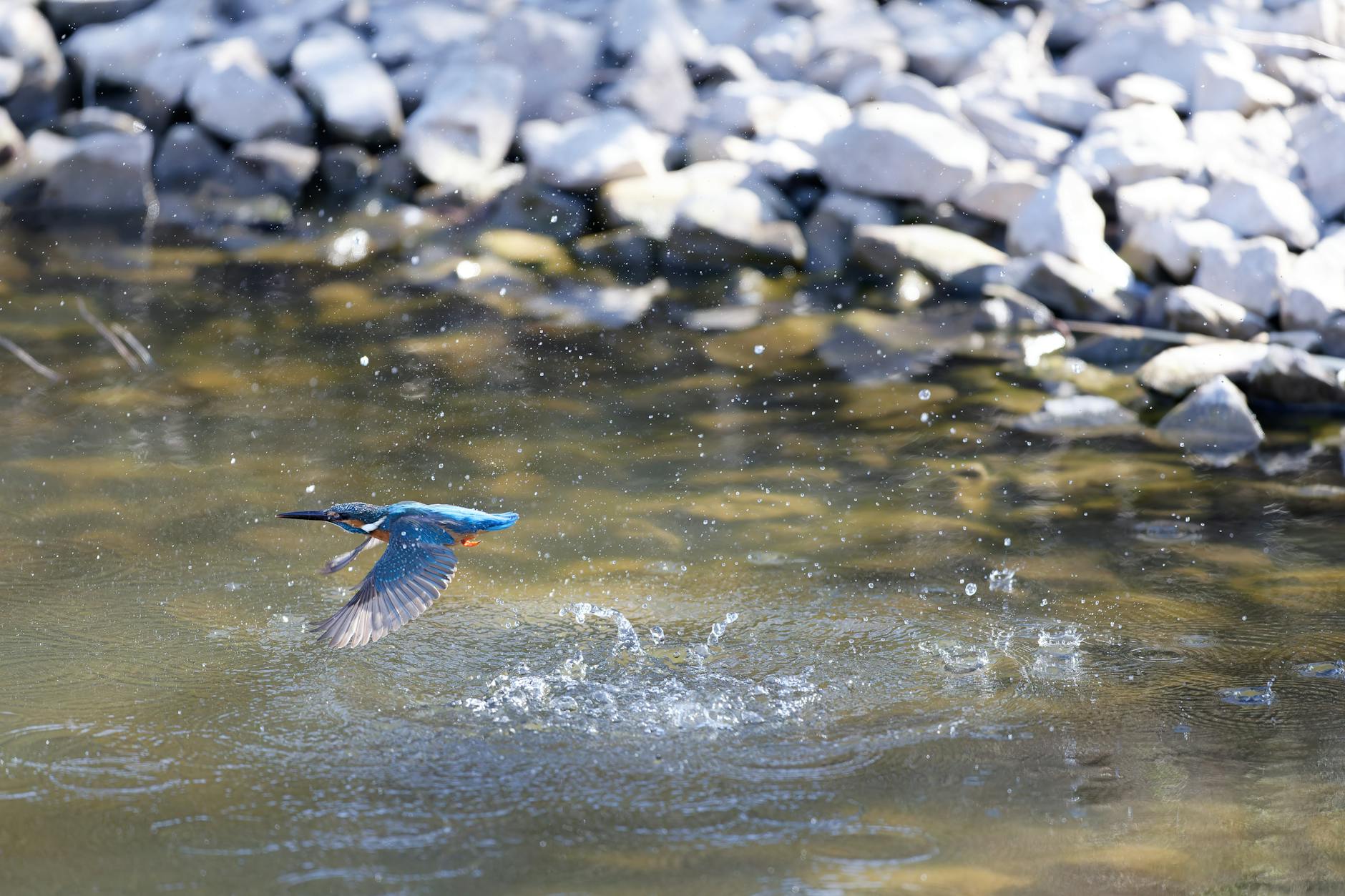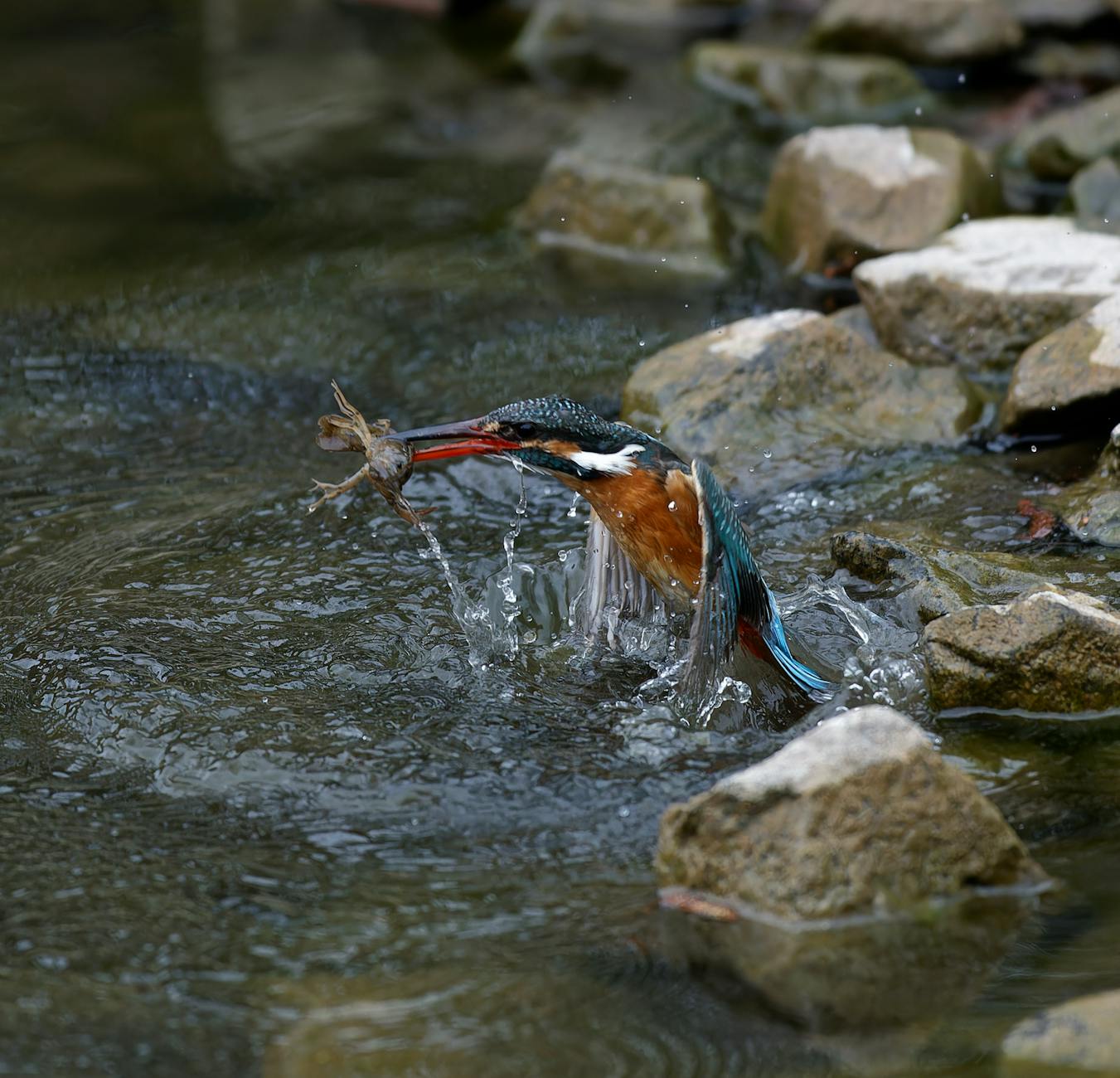Discover Why Kingfishers Are Fascinating Birds to Observe
Kingfishers are truly captivating birds, renowned for their vibrant colours and remarkable hunting skills. Watching them in action is not just entertaining; it’s a glimpse into nature’s artistry. These birds come alive as they dive with precision to catch fish, showcasing a level of agility that’s hard to ignore.
In this post, you’ll discover the unique features that make kingfishers so enjoyable to observe. From their striking plumage to their fascinating behaviours, we’ll explore what sets these birds apart in the avian world. If you’ve ever been curious about why these little creatures command attention, you’ll find the answers right here. Get ready to appreciate the beauty and talent of kingfishers in your local environment.
Physical Characteristics of Kingfishers
Kingfishers stand out not just for their dynamic behaviours, but also for their remarkable physical features. These characteristics not only contribute to their beauty but also play crucial roles in their hunting prowess and adaptation to diverse environments. Let’s explore the vibrant plumage and distinctive body structure that make these birds a joy to observe.
Vibrant Plumage
The feathers of kingfishers are a spectacle in themselves. With an array of vivid colours and intricate patterns, these birds capture the attention of anyone lucky enough to spot them. The typical kingfisher exhibits striking blues, vibrant oranges, and sometimes shades of green, creating a dazzling display as they flutter through the air.
These hues are not merely for show; they also serve a purpose. The bright colours help kingfishers blend into their surroundings when perched among foliage or water, but they can also create a striking contrast while diving. Birdwatchers are often mesmerised by this visual contrast, especially during the hunting dive, when the plumage glimmers under sunlight.
The unique structural properties of their feathers even lead to fascinating optical effects. For instance, the brilliant blue seen in many species is not solely due to pigment, but rather the result of light interacting with specially structured feather cells. This phenomenon makes kingfishers even more enthralling to observe, as they seem to shimmer and change hues in different lighting.
For more on kingfisher colours and patterns, check out this informative article from Living with Birds.

Photo by Pixabay
Distinctive Body Structure
Kingfishers possess a body structure that perfectly suits their predatory lifestyle. They are generally compact birds, measuring between 10 to 46 cm in length. Their bodies are short and stout, allowing for stability when perched over water.
One of the most defining features of kingfishers is their long, sharp beak, designed for catching prey. This straight, thick bill allows them to dive and snatch fish from the water’s surface with pinpoint precision. Their beaks are not only impressive in size but also in practical design, making them one of nature’s best tools for hunting aquatic life.
Additionally, kingfishers have short legs and a stubby tail, which aids in quick movements and agile dives. Their large heads improve their field of vision, making it easier to spot prey from a distance. Their body structure is a harmonious blend of form and function, crafted by nature for efficient hunting.
To learn more about the anatomy of kingfishers, visit San Diego Zoo’s page on kingfishers.
These physical attributes are not just fascinating but are essential for their survival. It’s no wonder that birdwatchers find delight in observing these remarkable details in kingfishers during their excursions.
Behavioural Traits
Kingfishers exhibit a variety of behaviours that not only enhance their survival but also increase the excitement for those watching them. Their unique hunting skills and territorial displays provide a fascinating insight into their lives and interactions.
Hunting Skills
Kingfishers are renowned for their incredible hunting techniques. Their methods are not just instinctual; they display an impressive level of skill and precision. Observing these birds in action is truly captivating.
When hunting, a kingfisher will often perch above the water, scanning for movement below. With breathtaking speed, it can dive head-first to catch fish. This hunting technique is not just about speed; it also involves remarkable accuracy. A kingfisher can spot its prey from a good distance, rapidly beating its wings to remain motionless overhead before making its swift plunge.
Did you know that a kingfisher can watch a single fish while hovering and then dive with astonishing precision? Research reveals that their beaks, designed to pierce water and grab prey, act like pincers. The Belted Kingfisher’s hunting technique is a prime example of this, showcasing how these birds can facilitate dives without completely submerging.

Photo by ao tak
This remarkable technique not only serves their nutritional needs but also showcases their agility and grace, making them a delight to watch.
Territorial Displays
Territorial behaviour in kingfishers is another fascinating aspect worth observing. These birds are known for fiercely defending their chosen territory, especially when it includes a water source abundant with fish. They establish their territory during the breeding season and often maintain it throughout the year.
Kingfishers signal their territory using several displays. You might spot them performing aerial displays or engaging in loud calls to warn intruders. When a kingfisher feels threatened, it may respond by landing on a prominent perch, puffing out its feathers to appear larger and more intimidating. This territorial display is not just for show; it conveys a clear message to potential rivals.
The critical need to guard their hunting grounds is reflected in their behaviour. As All About Birds explains, kingfishers will often engage in aggressive interactions if they sense intruders, ensuring they have access to adequate food resources.
Watching these territorial displays can be both thrilling and educational, offering birdwatchers a glimpse into the dynamics of their interactions and how they survive in the wild.
Habitat and Distribution
Kingfishers are not just stunning birds; their diverse habitats and wide distribution make them even more captivating. These remarkable creatures can be found across various regions, each species adapting to its unique surroundings. Let’s explore where you can find these birds and the environments they thrive in.
Global Distribution
Kingfishers are found on every continent except Antarctica. They inhabit a wide range of regions, showcasing their adaptability. Here are some notable distributions:
- Eurasia and Africa: The Common Kingfisher (Alcedo atthis) is prevalent across Europe and Asia, extending as far east as Japan and south into Africa.
- North America: The Belted Kingfisher can be spotted from Canada through the United States, reaching down into parts of Mexico.
- Caribbean and Islands: This species has been known to wander to the Galapagos Islands, the British Isles, and even as far as Greenland.
- Australia and New Zealand: Several kingfisher species inhabit these regions, each adapted to local environments.
You can learn more about their distribution from the Animal Diversity Web.

Photo by ao tak
Preferred Habitats
Kingfishers thrive in close proximity to water bodies, as their diet primarily consists of fish and aquatic insects. Their preferred habitats include:
- Freshwater: Rivers, lakes, streams, and ponds are ideal for most kingfishers, offering abundant food and suitable nesting sites.
- Wetlands and Marshes: These areas provide a rich variety of prey and often feature the dense vegetation kingfishers favour for perching.
- Coastal Regions: Some species can be found along shorelines and estuaries, where saltwater meets freshwater environments.
While they prefer open water, kingfishers also seek out areas with clear, shallow banks for nesting. They require earthen banks free from disturbance for successful breeding. You can find more information on their habitat preferences at Audubon.
By understanding where kingfishers thrive and the environments they prefer, you’re better equipped to spot these stunning birds in their natural habitats.
Conservation Status
The conservation status of kingfishers reflects the challenges they face in a rapidly changing environment. These stunning birds are not just a joy to watch; they are also indicators of ecological health. As such, understanding the factors threatening their populations and the efforts aimed at their protection is essential.
Threats to Kingfisher Populations
Human activities and environmental changes pose significant threats to kingfisher populations worldwide. Some of the main challenges include:
- Habitat Destruction: Wetland draining, deforestation, and urbanisation disrupt the natural habitats where kingfishers thrive. Many species, especially the Belted Kingfisher, are sensitive to nesting disturbances and may abandon areas with excessive human activity.
- Pollution: Contaminated water bodies lead to declines in fish populations, reducing food sources for kingfishers. Pollution often results from agricultural runoff and urban waste, making these birds further vulnerable.
- Climate Change: Altered weather patterns can affect breeding cycles and available food. Events like prolonged heatwaves can threaten young birds in nests, reducing survival rates.
- Invasive Species: The introduction of non-native predators, such as rats and feral cats, poses a risk to certain kingfisher species, notably the Guam Kingfisher.
Awareness of these threats is crucial for the future of kingfishers. Their declining numbers highlight the need for immediate action.
Conservation Initiatives
Efforts to protect kingfisher species and their habitats are underway across various regions. Some significant initiatives include:
- Habitat Restoration: Many conservation groups focus on rehabilitating wetlands and natural habitats, ensuring kingfishers have the environment they need to thrive. Projects often involve planting native vegetation and removing barriers to water flow.
- Species Recovery Programs: For endangered species like the Guam Kingfisher, programs aim to breed them in captivity before releasing them back into the wild. The Wilder Institute works with stakeholders to restore Guam Kingfishers to their natural habitats.
- Community Engagement: Raising awareness among local communities about the importance of kingfishers is vital. Educational campaigns encourage people to protect their local ecosystems and understand the birds’ role in biodiversity.
- Research and Monitoring: Ongoing scientific studies help track population trends, understand habitat requirements, and assess the impact of conservation efforts. This information is vital for adapting strategies and ensuring the effectiveness of protection initiatives.
Conservation status is not just a number; it’s a call to action for those who appreciate wildlife. Learn more about the critical conservation efforts for the Guam Kingfisher and the steps being taken globally to protect these amazing birds.

Photo by Catherine Sheila
Conclusion
Understanding why kingfishers are such amazing birds to watch adds to the overall appreciation of these vibrant creatures. Their impressive physical characteristics and intriguing behaviours make every sighting a unique experience.
Highlights of Their Fascination
- Stunning Plumage: Kingfishers display a kaleidoscope of colours. Their feathers not only attract attention but also serve practical purposes in survival.
- Masterful Hunters: Their incredible skills in hunting make observing them in action exhilarating. The speed and precision with which they dive is a testament to their evolution.
- Diverse Habitats: Their ability to thrive in a variety of environments enhances the joy of spotting them. From freshwater rivers to coastal areas, kingfishers adapt, making them a more remarkable sight.
Conservation Importance
The decline in kingfisher populations reveals the urgency for conservation. Their status reflects the health of ecosystems they inhabit. Additional reading on their conservation can be found at the Belted Kingfisher’s conservation page and the Kingfisher Wikipedia page.
Your Experience Matters
Next time you see a kingfisher, take a moment to appreciate their vibrant beauty and incredible behaviours. Each moment spent observing these birds contributes to a deeper connection with nature. So, have you had a memorable encounter with a kingfisher?

Photo by Rajukhan Pathan










